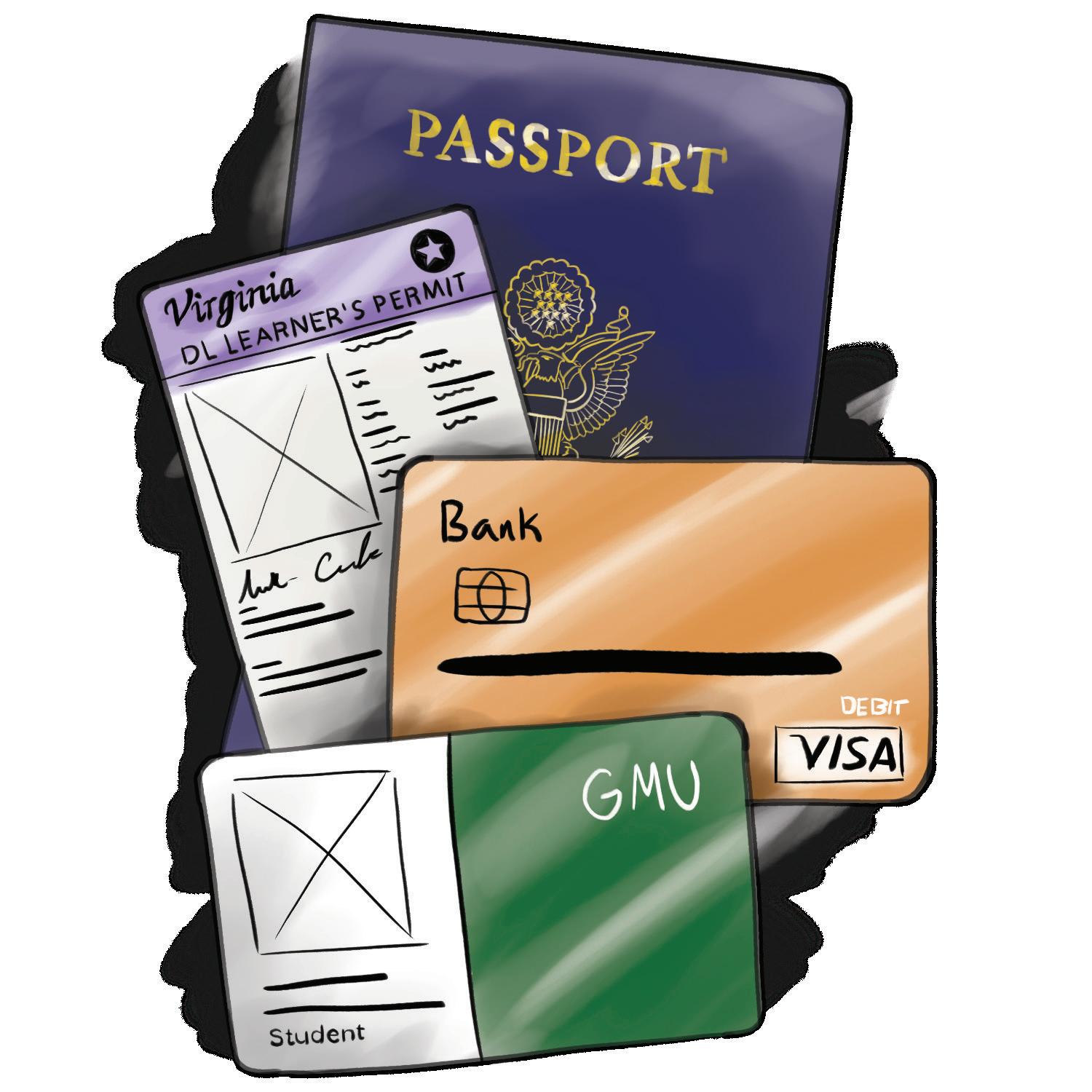
6 minute read
Social Transition
Section 3 Social Transition
Social transition may be the first or the only step someone may take and there’s more to it than just telling people your preferred name and pronoun. The following information is generalized because different states and regions have their own requirements for things such as legal name changes. This by no means is legal advice, just something I’ve already dealt with in the past and have talked to others through their process. Along with name changes, I briefly discuss other topics relating to picking a new name, passing, and most importantly... relationships.
Advertisement
Picking a New Name
This can be the easiest or the hardest decision to make for your entire transition, in my opinion, that includes surgeries too. Choosing a new name is a major deal, it’s the first step you can take towards fully being yourself. Some people may have gender-neutral names such as Jaime, or their names could have male variants making the decision easy. Just because you have a name that could work doesn’t mean it has to be that, you could change your first name or your full name entirely.
I’ve always had nicknames growing up and during my freshman year in college, my roommate had given me the nickname “Androo”, before I came out. When I came out to my mom, she had told me that if I was born a boy, she would have used the name Andy. Of course, I had a long list of names to try out beforehand, but the name Andrew sounded right and Andy could be my nickname. I know some people that searched up random baby boy names until they found something they liked. You’re always welcome to have people use certain names to test which fits best before finalizing your choice. There’s no need to rush the process.
Legal Name and Gender Marker
This section is mainly useful for those in the United States, but the best and the only advice I can give about this topic is to visit your local government’s website for their processes and requirements. Some places have filing fees to submit name change requests, others require specific written statements, therapist letters, proof of gender change, etc.
I found it to be better if I wrote out my legal experiences to give a general idea of the process. In order to get my name legally changed, I needed a letter from my therapist diagnosing gender dysphoria and attesting that I have been on testosterone for one year as proof. Along with the letter, I had to personally write a petition with a template to get signed by my district court. There was a seventy-dollar filing fee and I got a letter back from the district court within a couple of weeks with the signature of a judge. With this signed document, I could then go to the DMV (Department of Motor Vehicles), social security office, bank, and other official places to have my name changed. The court letter is basically written proof that my name was going from ‘X’ to Andrew. The only part I needed help with was changing my name in the insurance
because I was still a dependent; all of these steps were easy and free besides the court filing.
At the time of writing this book, I still have the female gender marker on my ID for two reasons. One, if I were to change my gender marker to male before getting a hysterectomy done, there would be problems with scheduling gynecology appointments because they are for women only. I’ve run into this problem several times with nurses questioning why I needed certain appointments. Just imagine having someone with a male name asking for a female visit for themselves because they need it, but can’t get it. Second, in my state, a gender-confirming surgery and letter are needed in order to change gender markers. Top surgery was already checked off, but because of the first problem I still have not changed my marker. For these two reasons, it’s important to triple-check your personal transition plans and how legal changes may affect you. Once my gender marker is changed, I will only then file to have my birth certificate amended with my current legal name and gender.
Socially Passing as Male
Passing means that society perceives someone as their gender identity, I am a trans man and pass as male. Unless I were to tell people directly that I was transgender, most of the time they would have never guessed, which is encouraging. The response of “oh I would have never guessed you were trans, you look so good,” is generally taken negatively because it’s implied that trans people are supposed to look a certain way. Personally, I am not bothered by those comments and just reply with “obviously, I know I look good.”
Giving tips on how to pass is difficult because how we express ourselves is unique, but society may not understand that. The best example is like Moe from the interviews, he is a proud trans man who also wears clothes with flower patterns; that doesn’t make him less manly, but some people may still read that as female. Passing in my opinion is all about finding inner confidence and staying true to yourself. Going on hormones makes it easier to pass with a deeper voice, but again like Mik, there’s the slightest chance of being read differently. There are a few general tips that I have gathered over the years:
• Hair: getting a masculine haircut from a barbershop to help structure your face is an easy step. • Binding: flattening the chest pre-surgery using binders is very common among trans men. It is important to not wear the binder for more than eight hours as it can restrict breathing. • Packing: prosthetics or even socks are often worn in underwear to give the appearance of a bulge. • Mannerisms: this has to do with how you talk, walk, sit and carry yourself. Minor changes in these can help with being perceived as male, but if it’s unnatural to you, just be you. • Bathrooms: no one makes eye contact or talks in there, so they probably wouldn’t notice you, to begin with. Everyone has to sit down at some point, so if you can’t stand to pee, don’t be discouraged. Search up STPs (Stand-to-Pee) devices as an option.
GC2B Binders are the best in my opinion. PointOfPride.org is a great resource for free binders if you can't get your own.
Relationships
Relationships can mean friends, family, or romantic partners. Yes, romantic relationships are possible and whoever you end up with is with you for who you are, not your body. One of the biggest decisions we as trans people have to make is when to tell someone we are trans, if at all. It’s not an obligation to tell everyone, but I think telling people in my inner circle is better in the long run; though I am very conservative about who and when I tell people. I would say I lucked out when it comes to romantic partners as a mutual friend told my crush that I was trans and she wasn’t bothered by it. Communication is important when in a romantic relationship, your partner doesn’t know when you’re feeling dysphoric, or what your physical boundaries are.
During my interview with Drake, he briefly talked about using the trans man tag on dating apps to deter people and as a way to get out over with. Before things get serious with people, it’s best to disclose you are trans so they’re not in complete shock. Transgender people are still a small minority in our society and if you pass very well people just assume you’re cisgender; best to avoid that awkward encounter. In the end, it’s your decision on who knows this personal side. We’re still normal people who went on a small detour on our journeys. Three words that got me through my journey are self-care, confidence, and respect.









